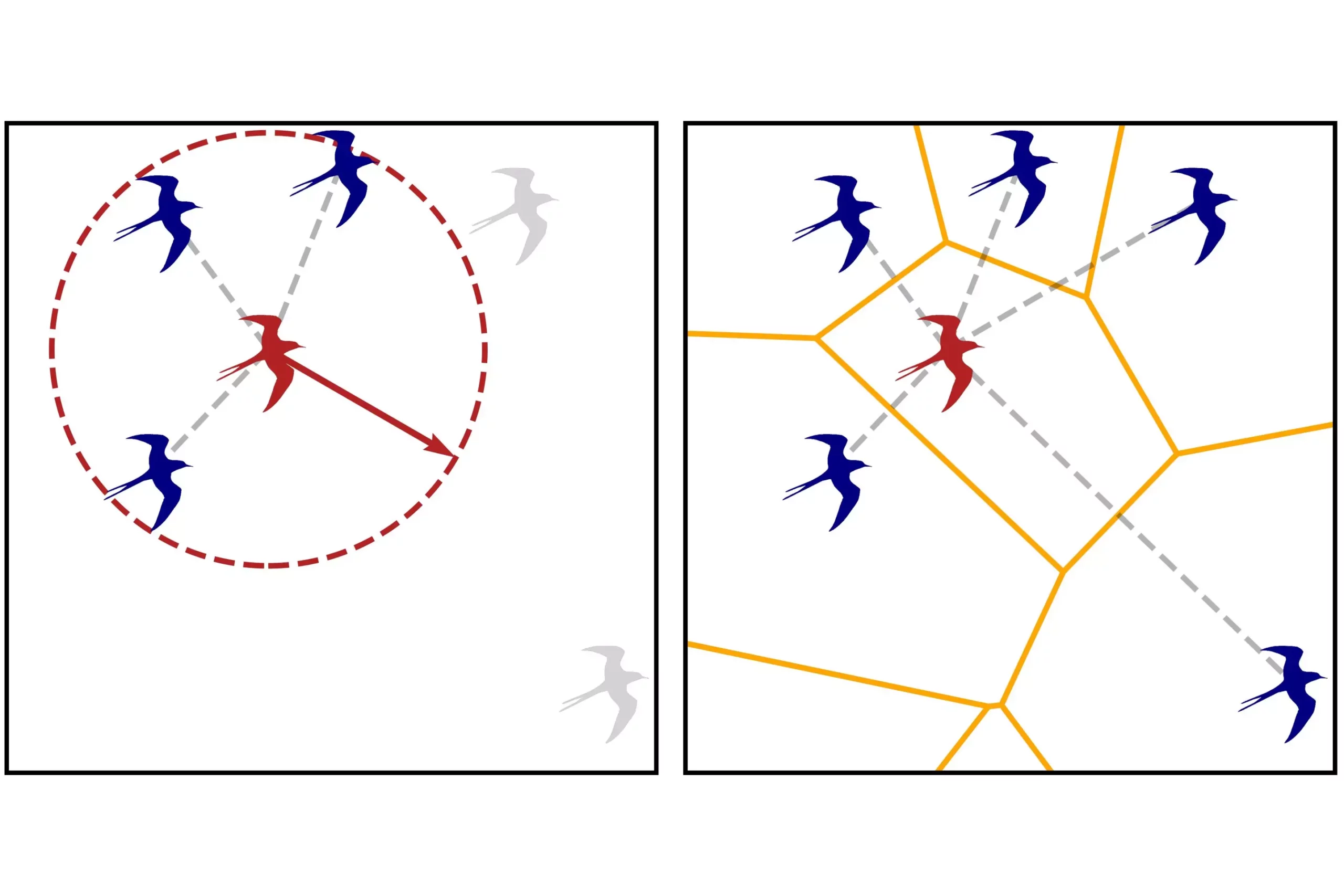The fascinating world of collective movement, whether it involves flocks of birds soaring through the sky or crowds of people navigating busy streets, has long intrigued scientists. Contrary to the belief that biological systems operate on fundamentally different principles than physical systems, recent research shows a surprising overlap. An international collaboration including researchers from MIT and CNRS in France has revealed intriguing insights into these dynamics, suggesting that self-propelled entities—ranging from biological beings to particles—share underlying principles of movement.
The study, published in the *Journal of Statistical Mechanics: Theory and Experiment*, challenges the traditional dichotomy between the behavior of atoms in a material and the movement of living organisms. As Julien Tailleur of MIT’s Biophysics department points out, “In a way, birds are flying atoms.” While the complexity of biological movement, including cognitive factors and visual fields, has historically suggested a fundamental difference in movement paradigms, the researchers argue that these differences may not significantly affect the collective behaviors observed in various systems.
At the core of this research is the concept of phase transitions, specifically the transition from disordered to coordinated movement—a principle commonly investigated in physics. Traditionally, it was accepted that the nature of this transition differed between physical particles, which influence one another based on absolute distances, and biological entities, which operate on a semi-visible topological realm. However, the MIT-CNRS study demonstrated that such differences do not fundamentally alter the mechanics of collective movement.
One compelling aspect of the research focuses on the distinctions in relationships that govern movement. For particles, their interactions are largely determined by proximity. In contrast, living organisms, such as pigeons flying in formation, appear to rely less on physical distance than on their visual perceptions of neighboring individuals. Tailleur highlights that what matters to these birds is not merely the nearest companions, but rather those within their line of sight. The cognitive limitations of these organisms mean that they can only monitor a specific number of visible peers at any given time, leading to what researchers describe as a “topological relationship.”
This concept of influence based on visual recognition rather than absolute positioning has profound implications. It suggests that certain biological systems exhibit collective behaviors akin to those observed in atomic systems, despite the intrinsic complexity of living entities. The findings indicate a potential universality in the principles governing collective behavior across vastly different systems.
The innovative models developed by Tailleur and his team borrow concepts from the behavior of ferromagnetic materials. Such materials display random orientations of spins at high temperatures and lower densities, which transition to alignment under specific conditions—akin to groups of individuals moving together in harmony. This transition is characterized by a sudden shift from disorder to order, a phenomenon previously viewed as unique to passive ferromagnets.
However, the team identified that even when biological elements are analyzed through a similar lens—specifically the influence of “topological neighbors”—a discontinuous phase transition occurs. This revolutionary finding indicates that biological systems may not only mirror the characteristics of physical systems but may also undergo transitions to collective motion in similar abrupt manners.
The implications of this study extend beyond the scientific community. Understanding the principles of collective movement has applications in numerous fields, including neuroscience, robotics, and even urban planning. By recognizing that the dynamics governing birds and crowds operate on parallel principles, solutions could emerge for the efficient design of transportation systems, crowd management, or algorithms for autonomous vehicles that mimic the fluidity of flocking behavior.
While it is crucial to note that this research simplifies a highly complex realm of collective behaviors, reducing noise and factors irrelevant to the core mechanics, it opens pathways to new explorations. As Tailleur elaborates, a careful balance is necessary when distilling complex phenomena to their essentials: “as simple as possible, but not simpler.”
The collaborative investigation into collective motion underscores a pivotal change in how we perceive the relationship between physical and biological systems. By harnessing the commonalities between these domains, researchers can foster advancements that enhance our understanding of both nature and the engineered systems we design to navigate it.

